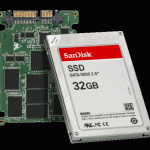 REVISION* Since the VHS ( and Beta for you Sony lovers ) back in the early eighties, recording formats have been one of the slowest forms of a growing technology in the A/V industry. Digi-Beta and BetaCam have long been the standard for the industry but as the song goes, “the time’s, they are a changing” .From DVD’s and mini-discs all the way to hard drives, the techies have been plotting to remove tape and install a new standard, and slowly but surely over the past few years production studios have started to come on board. Broadcast stations have been and are continuing to make the switch to tapless media both in storage and recording formats, and industry enthusiasts seems ready to make tape a thing of the past.
REVISION* Since the VHS ( and Beta for you Sony lovers ) back in the early eighties, recording formats have been one of the slowest forms of a growing technology in the A/V industry. Digi-Beta and BetaCam have long been the standard for the industry but as the song goes, “the time’s, they are a changing” .From DVD’s and mini-discs all the way to hard drives, the techies have been plotting to remove tape and install a new standard, and slowly but surely over the past few years production studios have started to come on board. Broadcast stations have been and are continuing to make the switch to tapless media both in storage and recording formats, and industry enthusiasts seems ready to make tape a thing of the past.
The newest form of this technology is Solid State, a format that emulates a hard disk interface but does not have any moving parts like a typical hard drive does. That means no wear and tear of mechanics, no spindle or RPM speed to hinder your time. Everything is, well, like its name, in a “solid state”. SSDs (as they are referred too) typically offer higher performance–often much higher performance–than hard-disk drives and are more durable since they have no moving parts. Tech insiders say that this new format will revolutionize the way information is stored. Tech giants such as HP are embracing Solid State as Jieming Zhu, distinguished technologist at HP StorageWorks recently commented
“HP agrees with industry insiders that SSD will be more widely used in storage systems as early as next year and as a result, is working closely with its partners now to deliver innovative solid state storage technology solutions. All SSD vendors provide existing input/output storage protocol compatibility, interoperable with the existing operating system storage stack,”
However, he also cautions that SSD is obviously not for everyone and is still in the early stages of it’s industry growth. But cameramen and post production people are eating it up, with high recommendations coming from most users siting ease of use, in the field and in post, as well as it’s durability. The one factor which causes some hold back is cost. The initial cost is significantly higher than that of tape but SSD’s counter that by being able to re-record without generation loss whereas tape of course cannot, however there is a question of SSD’s longevity. Some say they ‘wear out’ a lot sooner than traditional drives, meaning that the lifespan of an SSD is a lot sooner than traditional drives, but that is improving.
In the end, from an editor’s perspective, you damn well better be aware of anything new on the market that you see becoming of widespread use, otherwise you’ll services will quickly go the way of the laserdisk and you don’t ever want a perspective opportunity to pass you by due to perceived inexperience.
I’ve included an interesting video clip below. It demostrates the differences in real time using two identical laptops. One a Samsung typical hard drive and a Samsung Solid State Drive.
